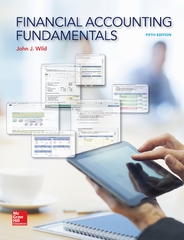Quantitative Problem 1: Hubbard Industries just paid a common dividend, Do, of $1.90. It expects to grow at a constant rate of 4% per year. If investors require a 8% return on equity, what is the current price of Hubbard's common stock? Do not round intermediate calculations. Round your answer to the nearest cent. $ - per share A-Z Zero Growth Stocks: ofice The constant growth model is sufficiently general to handle the case of a zero growth stock, where the dividend is expected to remain constant over time. In this situation, the equation is: Po = D Note that this is the same equation developed in Chapter 5 to value a perpetuity, and it is the same equation used to value a perpetual preferred stock that entitles its owners to regular, fixed dividend payments in perpetuity. The valuation equation is simply the current dividend divided by the required rate of return Quantitative Problem 2: Carlysle Corporation has perpetual preferred stock outstanding that pays a constant annual dividend of $1.80 at the end of each year. If investors N require an 8% return on the preferred stock, what is the price of the firm's perpetual preferred stock? Round your answer to the nearest cent. per share Nonconstant Growth Stocks: For many companies, it is not appropriate to assume that dividends will grow at a constant rate. Most firms go through life cycles where they experience different growth rates during different parts of the cycle. For valuing these firms, the generalized valuation and the constant growth equations are combined to arrive at the nonconstant growth valuation equation: D1 Po= - + ... + - DN PN ( 1 + 1 5 ) 1 + ( 1+ 1. ) 2 + ( 1 + 1, )N ( 1 + 1 . ) N Basically, this equation calculates the present value of dividends received during the nonconstant growth period and the present value of the stock's horizon value, which is the value at the horizon date of all dividends expected thereafter. At Quantitative Problem 3: Assume today is December 31, 2019. Imagine Works Inc. just paid a dividend of $1.20 per share at the end of 2019. The dividend is expected to grow at 18% per year for 3 years, after which time it is expected to grow at a constant rate of 5.5% annually. The company's cost of equity (Is) is 10%. Using the dividend growth model (allowing for nonconstant growth), what should be the price of the company's stock today (December 31, 2019)? Do not round intermediate calculations. Round your answer to the nearest cent. per share Grade it Now Save & Continue Continue without saving MacBook Pro Q Springer # % & 4 5 6 8







